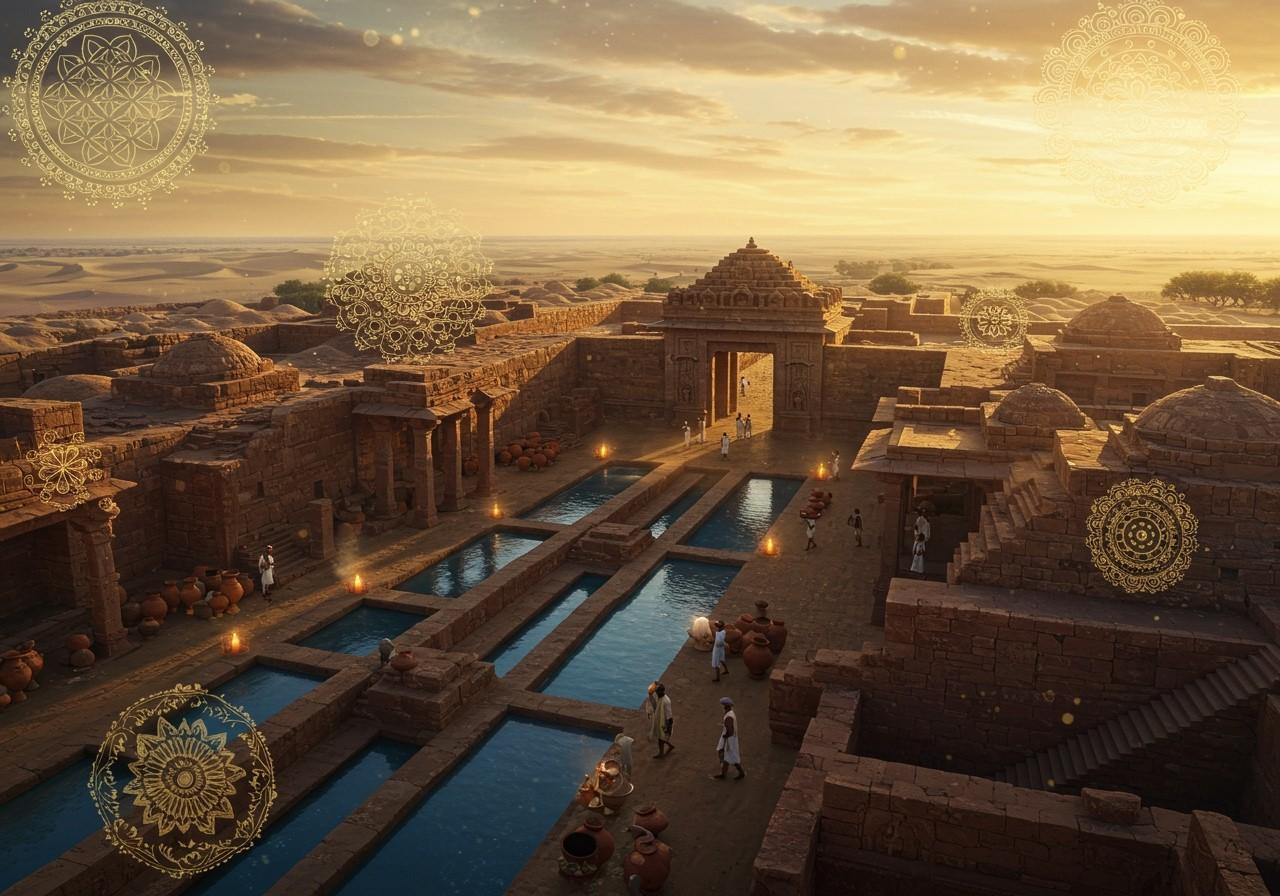
Journey back in time to Dholavira, a remarkable urban center of the ancient Indus Valley Civilization. Situated on Khadir Bet island in Gujarat, India, this archaeological marvel offers a captivating glimpse into a sophisticated society that thrived thousands of years ago. Dholavira, one of the five largest Harappan sites, showcases remarkable urban planning, advanced engineering, and a unique cultural heritage.
Unveiling Dholavira’s Significance
What makes Dholavira so special? Dholavira distinguishes itself through its ingenious water management system, sophisticated urban layout, and unique architectural features. Unlike many other Indus Valley sites primarily built with bricks, Dholavira incorporated stone construction, adding a distinct character to its structures. The city’s intricate network of reservoirs and channels testifies to the inhabitants’ advanced understanding of water conservation in the arid environment of the Rann of Kutch. The division of the city into the citadel, middle town, and lower town hints at a complex social hierarchy and organized urban planning.
Exploring Dholavira’s Distinctive Features
How did Dholavira differ from other Indus cities? Several key features set Dholavira apart. Its unique threefold layout, encompassing the citadel, middle town, and lower town, indicates a sophisticated level of urban planning. The extensive use of stone in construction contrasts with the predominantly brick architecture of other Indus cities like Mohenjo-daro and Harappa. Moreover, Dholavira’s advanced water management system, featuring reservoirs, channels, and wells, highlights the inhabitants’ remarkable ability to thrive in a challenging environment. The discovery of large inscriptions in the Harappan script at Dholavira provides valuable insights into the Indus Valley Civilization’s writing system.
Dholavira: Location and Discovery
Where is Dholavira located? Dholavira is situated in the Kutch district of Gujarat, India, on Khadir Bet island within the Great Rann of Kutch. Its strategic location influenced its development and interaction with other contemporary civilizations. Who discovered Dholavira and when? Archaeologist Jagat Pati Joshi first identified the site in 1967-68. Subsequent excavations led by R.S. Bisht of the Archaeological Survey of India (ASI), beginning in 1990, revealed the full extent of the city’s remains and its historical significance. Dholavira was inhabited between approximately 3000 BCE and 1500 BCE.
Dholavira Today: A UNESCO World Heritage Site
Today, Dholavira stands as a UNESCO World Heritage Site, recognized for its outstanding universal value. Ongoing research and conservation efforts continue to unveil new facets of this ancient city’s past. Dholavira invites visitors to explore its remarkable ruins, including the citadel, reservoirs, and remnants of its unique signboard inscribed with Indus script. The site also features a museum displaying artifacts unearthed during excavations, offering a tangible connection to this ancient civilization.
Connect with Ancient Traditions through Poojn.in
Inspired by the rich heritage of Dholavira? Poojn.in, India’s largest cultural goods and services store, offers a curated selection of traditional items to enhance your spiritual practices.
- Traditional Prayer Mats (Explore our collection): Discover authentic prayer mats crafted using time-honored techniques. From Gongadi from Gujarat to Durries from Rajasthan and Khes from West Bengal, find the perfect mat to create a sacred space for meditation and rituals. Our mats honor the ancient weaving traditions of India, bringing a touch of authenticity to your practice.
- Ritual Essentials (Browse our selection): Enhance your rituals with copper and brass vessels reminiscent of those used in ancient times. These high-quality vessels are perfect for maintaining the purity and sanctity of your spiritual practices, connecting you with the traditions of the past. We offer a wide variety of sizes and styles to suit your needs.
- Regional Variations (Discover regional crafts): Explore our diverse range of regional prayer mats, from Kashmiri Shays to Maharashtrian Galichas. Embrace the unique craftsmanship and cultural heritage of each region while upholding traditional authenticity. Our collection caters to diverse preferences, allowing you to find the perfect mat to enhance your spiritual journey.
Visit Poojn.in to discover a wide array of traditional prayer mats, ritual items, and more. Experience secure online shopping with delivery across India, bringing the essence of ancient traditions to your doorstep.
Further explore the rich tapestry of Indian culture and spirituality through our blog posts:
- Nira River Sangam: Importance and Cultural Impact
- Shri Swaminarayan Mandir Mumbai: A Spiritual Retreat
- Lord Shiva and Krishna Stories and Bhajans: Exploring Hindu Mythology


